ITRC PFAS Beyond the Basics: PFAS Fate and Transport, Site Characterization and Source ID Training
Sponsored by: Interstate Technology and Regulatory Council
This training class builds on the earlier information for fate and transport and site characterization presented in the PFAS 101 CLU-IN training. It provides more in-depth information for fate and transport, site characterization, source identification and some introductory information on environmental forensics. These topics will be presented along with options and a framework for data visualization. This training will focus largely on PFAS fate and transport in groundwater. The goal is to provide detailed information about the inputs practitioners can use to develop a robust conceptual site model to help understand fate and transport at PFAS sites, and how to gather evidence of multiple sources.
Resources and further details for the topics included in this training are in the ITRC Guidance Document (PFAS-1) in Sections 2.6, 3, 4, 5, 10, 11 and 15 along with referenced tables.
Learning Objectives:
- Understand fate and transport processes that are unique to PFAS due to their physical and chemical properties.
- How to characterize sites with these processes and properties in mind.
- Describe options for and advantages of various data visualization techniques.
- Introduce basic forensic techniques for source evaluation.
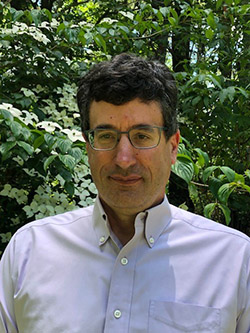 Michael Bock, Verdantas (mbock@verdantas.com)
Michael Bock, Verdantas (mbock@verdantas.com)
Dr. Michael Bock is a Senior Principal with over 25 years of experience in environmental science and consulting. He specializes in the investigation and assessment of contaminated marine and freshwater sediments, including statistical analysis, forensic analysis and source allocation, fate and transport modeling, species sensitivity toxicity evaluations, and ecological and human health risk assessment. His expertise includes using multivariate statistical data analysis such as multicriteria analysis and receptor modeling/source unmixing (e.g., principal components analysis, hierarchical cluster analysis, ratio analysis, and receptor modeling), to determine fingerprint patterns and allocate sources in environmental samples. His environmental forensic work has focused extensively on discerning sources and the fate of polychlorinated biphenyls (PCBs), dioxins and furans (PCCD/Fs), Per- and polyfluoroalkyl substances (PFAS), polycyclic aromatic hydrocarbons (PAHs), and metals in rivers, lakes, ports, harbors, groundwater, and soil. He has developed multimedia fate and transport models that are used to model organic chemicals in the environment, during wastewater treatment, and in land applied biosolids. These models have been used to assess the concentration, persistence, treatability, bioaccumulation, and weathering of chemicals in the environment.
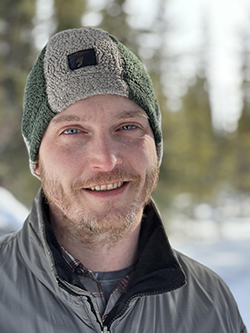 Robert Burgess, Alaska Department of Environmental Conservation (robert.burgess@alaska.gov)
Robert Burgess, Alaska Department of Environmental Conservation (robert.burgess@alaska.gov)
Robert Burgess works as an Environmental Program Specialist with the Alaska Department of Environmental Conservation in the Contaminated Sites Program. He has over 10 years of experience providing regulatory oversight on contaminated site characterization and cleanup at a variety of sites throughout the largest state in the nation, and currently serves as a PFAS subject matter expert for Alaska. Robert earned a B.S. in Biology from the University of Alaska Fairbanks, and a M.S. in Biological Sciences with a research focus on molecular microbial ecology and environmental microbiology from the same institution. Robert joined the ITRC PFAS team in 2017 and has been the co-lead of the Fate and Transport, Site Characterization, and Physical and Chemical Properties subgroup since 2021.
Ted Campbell, NC DEQ (ted.campbell@deq.nc.gov)
Ted Campbell is an Environmental Program Consultant and Regional Hydrogeologist for the Department of Environmental Quality (DEQ). Ted Campbell played a key part in the largest coal ash cleanup in the nation. His work in testing complex groundwater modeling from Duke Energy helped lead to the State of North Carolina's historic settlement agreement with Duke to clean up coal ash basins in the state. Campbell is DEQ's lead expert on the calculation of background values of groundwater contaminants. He is also the Co-Lead investigator for a PFAS fate and transport study in a multi-county watershed with high profile impacts to surface and groundwater drinking supplies of over 200,000 residents. Mr. Campbell is also developing an updated conceptual model of PFAS sources and basin wide characteristics that influence transport in space and time.
Dina Drennan, BEM Systems (ddrennan@bemsys.com)
Dr. Dina Drennan is a Senior Environmental Scientist with 15 years of experience in academia, research, and consulting. Her work has focused on site characterizations, microbial ecology of engineered systems, fate and transport of emerging contaminants. She has worked in research and treatability laboratories. More recently her work has focused on developing conceptual site models, informing data gaps, and applying forensic techniques for PFAS source appointment. Dina has a B.S. in Biology from Syracuse University and an M.S. and PhD in Civil and Environmental Engineering from Colorado School of Mines and has been an active contributor to the Interstate Technology and Regulatory Council’s PFAS team since 2022.
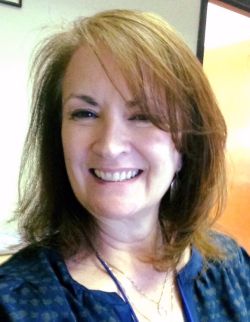 Sandra Goodrow, Ph.D., NJDEP, Division of Science and Research (Sandra.Goodrow@dep.nj.gov)
Sandra Goodrow, Ph.D., NJDEP, Division of Science and Research (Sandra.Goodrow@dep.nj.gov)
Dr. Sandra Goodrow is a Research Scientist in the New Jersey Department of Environmental Protection's (NJDEP) Division of Science and Research. Dr. Goodrow is a physical and chemical environmental modeler, evaluating the sources, fate, transport, and transformation of emerging compounds including per- and polyfluoroalkyl substances (PFAS). Dr. Goodrow has been involved in multiple research efforts that identify occurrences and track down sources of PFAS and other emerging compounds in fish tissue, surface water, and sediments from around the State of New Jersey and provides technical expertise for the Contaminants in Fish Tissue program. She has coordinated efforts with US EPA Office of Research and Development on multi-media analysis leading to the detection of a novel PFAS present in the New Jersey environment. She also served as the co-Team lead for the Interstate Technology Regulatory Council's (ITRC) PFAS Team from 2020 through 2023 and is currently an active team member.
Chris Olivares, University of California, Irvine (chris.olivares@uci.edu)
Christopher Olivares Martinez is an Assistant Professor in the civil and environmental engineering department of the University of California, Olivares Martinez's current research includes environmental biotechnology, remediation, metabolomics, pollutant fate in natural and engineered systems, microbial toxicity and environmental organic chemistry. Before arriving at UCI, Olivares Martinez was a postdoctoral fellow at the UC Berkeley Department of Civil and Environmental Engineering, where he studied in‐situ chemical remediation of per‐ and polyfluorinated alkyl substances (PFAS), as well as the impact to microbial bioremediation on co-contaminants. He has also researched water quality impacts from forest fires and bioremediation and toxicity of munitions compounds. Olivares Martinez earned a doctorate in environmental engineering from the University of Arizona. He also earned master's degrees in environmental engineering and French literature and culture.
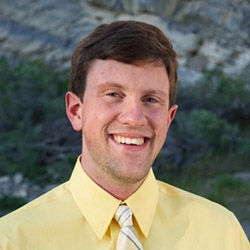 Skyler Sorsby, WSP (skyler.sorsby@wsp.com)
Skyler Sorsby, WSP (skyler.sorsby@wsp.com)
Skyler Sorsby is a hydrogeologist at WSP with sediment and upland remediation experience in eleven different states. Skyler's technical focus includes fate-and-transport assessments, groundwater modeling, and multivariate statistical assessment of environmental chemistry datasets (including PFAS). Skyler is an active participant in the PFAS, Data Science, and Groundwater Modeling communities at WSP, and provides global support for projects requiring an environmental data science approach to extract complex patterns from large datasets.
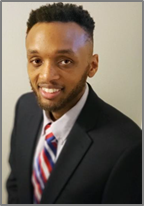 Ryan Thomas, Parsons (Ryan.Thomas@parsons.com)
Ryan Thomas, Parsons (Ryan.Thomas@parsons.com)
Dr. Ryan Thomas serves as an Emerging Contaminants Principal and Analytical Chemistry Director with over 16 years of experience in academic research and professional consulting focused on site characterization, sampling and analysis, and remediation technologies. His areas of expertise include performing and directing treatability studies to evaluate remedial alternatives for industrial sites with soil, groundwater, drinking water sources, landfill seeps, and surface water streams impacted with chlorinated solvents, metals, and emerging contaminants
such as per- and polyfluoroalkyl substances (PFAS) and 1,4-dioxane. Ryan has provided technical guidance for public and private clients, published peer-reviewed articles, and delivered technical presentations at national and international conferences. Since 2017, he has served in various roles for the Interstate Technology and Regulatory Council's PFAS team including as a Member of the Sampling and Analysis subgroup and most recently as a Writing Subgroup Co-Leader for the Physical and Chemical Properties, Fate and Transport, and Occurrence, and Site Characterization sections. Ryan has a B.S. degree in Chemistry from the University of Michigan-Dearborn and Ph.D. degree in Analytical Chemistry from Wayne State University.
Moderator:
ITRC Training Program (itrc@itrcweb.org)
Webinar Slides and References:
Additional Resources:
- These materials will be available by
Thank you for participating in our webinar. We would like to receive any feedback you might have that would make this service more valuable.
Help & FAQs
- Frequently Asked Questions
- Content Questions?
Call ITRC Training Program at 202-266-4932 or itrc@itrcweb.org - Technical Problems?
Leave us a comment - Cancel Your Registration
- My Participation Records
- CEU Credits and PDHs
Zoom Resources
Before Webinar Day
This seminar will be delivered through Zoom. Participants are encouraged to update to the latest version of the Zoom application for the best experience.
If you are unable to install the Zoom application, most functions will be available if you join just using a modern web browser such as Chrome, Edge or Firefox. We strongly encourage you to run the Zoom Meeting Test prior to attending this webinar. Technical support on the day of the webinar will be very limited and subject to significant delays.
Backup Conference Call
If you cannot participate using online audio, you may join the optional call in line. After checking in for the live event using the instructions listed below, you will see several options to participate. Please click the links in option 4 to follow along by phone and obtain the call in number. If you cannot access the phone number, you may request the call in line from the event moderator in the Q&A or send an email to Jean Balent at balent.jean@epa.gov
Click on "Join Webinar" at the top of this screen, enter your exact first and last name as you registered and enter the number of people attending at your location (including yourself). You should then be taken to the Zoom meeting room. Join with Zoom Application: For those joining with the Zoom application, you may be prompted to sign with a zoom account or join as a guest without signing in.
If joining as a guest, you will be prompted to enter your name and email address. Remember your name, image, video or voice may be visible to others in the live event. When done, click "Join" When it is time for the live event to start, the meeting host will admit you to the live Zoom meeting. Join via web browser (without the Zoom Application): For those joining with a web browser, you may close any pop ups prompting you to download the Zoom app. The next window will allow you to enter your name (first name and last name) and check the box that you are not a robot. Click the blue join button. You may also be asked to provide your email address before joining the room. Remember your name, image, video or voice may be visible to others in the live event. When done, click "Join" When it is time for the live event to start, the meeting host will admit you to the live Zoom meeting. You may need to periodically refresh the browser window to confirm if the host has admitted you. The presenters will control what slide you are viewing. You may submit questions online for the instructors to answer during the webinar by typing in the "Q&A" area. It is not necessary to wait until the question and answer periods to submit questions. At the end of the webinar you will be guided to our feedback form and links to additional resources, including the complete presentation. These links will remain active after the webinar. Provided for your convenience. Importing or accepting the invitation within this iCalendar file is not required, and declining the invitation does not cancel your registration. For additional information on iCalendar, please see our
iCalendar Help It is EPA's policy to make reasonable accommodation to persons with disabilities wishing to participate in the agency's programs and activities, pursuant to the Rehabilitation Act of 1973, 29 U.S.C. 791. Any request for accommodation should be made to at or , preferably one week or more in advance of the seminar, so that EPA will have sufficient time to process the request. EPA would welcome specific recommendations from requestors specifying the nature or type of accommodation needed. EPA welcomes specific recommendations from requestors specifying the nature or type of accommodation needed. Please note that CLU-IN provides both alternate phone call-in options and closed captioning for all webinars, and requests for these specific accommodations are not necessary.
Webinar Day, Checking In
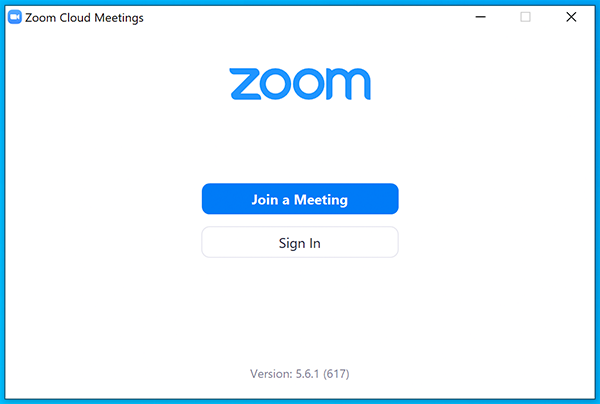
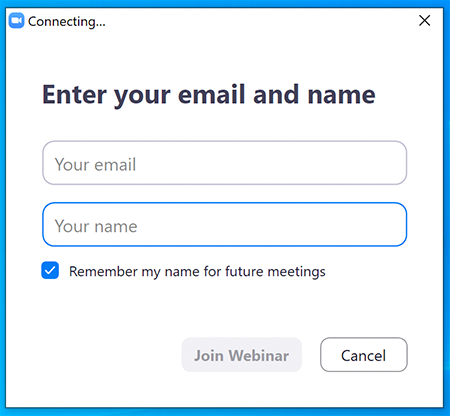
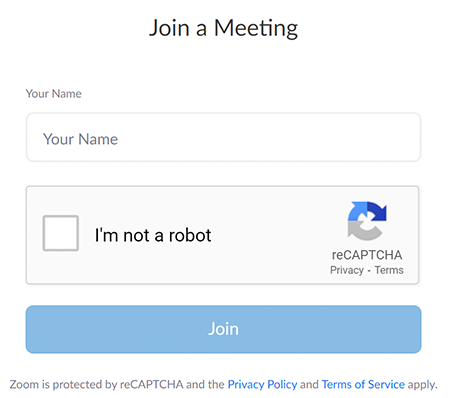
Moving Through Slides
Feedback & Links to Additional Resources
iCalendar File
Rehabilitation Act Notice for Reasonable Accommodation
Rehabilitation Act Notice for Reasonable Accommodation
It is EPA's policy to make reasonable accommodation to persons with disabilities wishing to participate in the agency's programs and activities, pursuant to the Rehabilitation Act of 1973, 29 U.S.C. 791. Any request for accommodation should be made to at or , preferably one week or more in advance of the webinar, so that EPA will have sufficient time to process the request. EPA would welcome specific recommendations from requestors specifying the nature or type of accommodation needed. EPA welcomes specific recommendations from requestors specifying the nature or type of accommodation needed. Please note that CLU-IN provides both alternate phone call-in options and closed captioning for all webinars, and requests for these specific accommodations are not necessary.
Webinar Recording
By participating in this CLU-IN webinar, you automatically agree to authorize recording of audio and visual content presented during this live event and consent to subsequent use of this recording in the public domain by the U.S. Environmental Protection Agency. This recording may include questions, comments and poll responses provided by you during the live event in addition to your name, voice, image or likeness. This recording will be made available after the conclusion of the live event as part of the CLU-IN webinar archives, and will remain available indefinitely. If you do not wish to consent to the recording, please do not join the live event, and contact Jean Balent at 202-566-0832 or balent.jean@epa.gov to discuss your concerns.
Content Disclaimer
This webinar is intended solely to provide information to the public. The views and opinions expressed as part of this webinar do not necessarily state or reflect those of the U.S. Environmental Protection Agency. It is not intended, nor can it be relied upon, to create any rights enforceable by any party in litigation with the United States, or to endorse the use of products or services provided by specific vendors. With respect to this webinar, neither the United States Government nor any of their employees, makes any warranty, express or implied, including the warranties of merchantability and fitness for a particular purpose, or assumes any legal liability or responsibility for the accuracy, completeness, or usefulness of any information, apparatus, product, or process disclosed, or represents that its use would not infringe privately owned rights.

